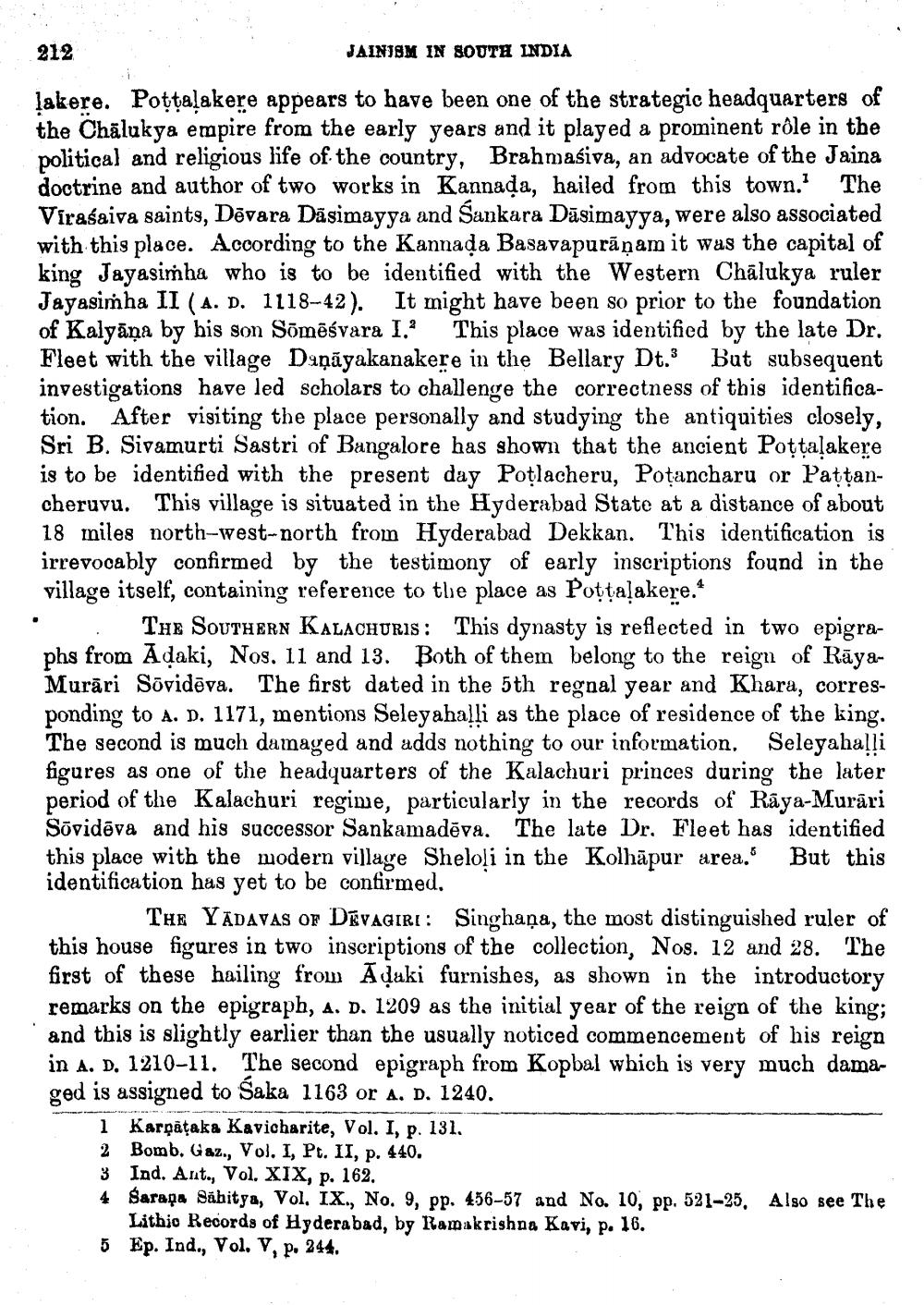________________
212
JAINISM IN SOUTH INDIA
The
lakere. Pottalakere appears to have been one of the strategic headquarters of the Chalukya empire from the early years and it played a prominent rôle in the political and religious life of the country, Brahmasiva, an advocate of the Jaina doctrine and author of two works in Kannada, hailed from this town.' Virasaiva saints, Devara Dasimayya and Sankara Dasimayya, were also associated with this place. According to the Kannada Basavapuraṇam it was the capital of king Jayasimha who is to be identified with the Western Chalukya ruler Jayasimha II (A. D. 1118-42). It might have been so prior to the foundation of Kalyana by his son Sōmesvara I.2 This place was identified by the late Dr. Fleet with the village Danayakanakere in the Bellary Dt.3 But subsequent investigations have led scholars to challenge the correctness of this identification. After visiting the place personally and studying the antiquities closely, Sri B. Sivamurti Sastri of Bangalore has shown that the ancient Pottalakere is to be identified with the present day Potlacheru, Potancharu or Pattancheruvu. This village is situated in the Hyderabad State at a distance of about 18 miles north-west-north from Hyderabad Dekkan. This identification is irrevocably confirmed by the testimony of early inscriptions found in the village itself, containing reference to the place as Pottalakere.*
THE SOUTHERN KALACHURIS: This dynasty is reflected in two epigraphs from Adaki, Nos. 11 and 13. Both of them belong to the reign of RayaMurari Sōvideva. The first dated in the 5th regnal year and Khara, corresponding to A. D. 1171, mentions Seleyahalli as the place of residence of the king. The second is much damaged and adds nothing to our information. Seleyahalli figures as one of the headquarters of the Kalachuri princes during the later period of the Kalachuri regime, particularly in the records of Raya-Murari Sōvidēva and his successor Sankamadeva. The late Dr. Fleet has identified this place with the modern village Sheloli in the Kolhapur area. But this identification has yet to be confirmed.
THE YADAVAS OF DEVAGIRI: Singhana, the most distinguished ruler of this house figures in two inscriptions of the collection, Nos. 12 and 28. The first of these hailing from Adaki furnishes, as shown in the introductory remarks on the epigraph, a. D. 1209 as the initial year of the reign of the king; and this is slightly earlier than the usually noticed commencement of his reign in A. D. 1210-11. The second epigraph from Kopbal which is very much damaged is assigned to Śaka 1163 or A. D. 1240.
1 Karpataka Kavicharite, Vol. I, p. 131.
2 Bomb. Gaz., Vol. I, Pt. II, p. 440.
3 Ind. Ant., Vol. XIX, p. 162.
4 Sarapa Sahitya, Vol. IX., No. 9, pp. 456-57 and No. 10, pp. 521-25, Also see The Lithic Records of Hyderabad, by Ramakrishna Kavi, p. 16.
5 Ep. Ind., Vol. V, p. 244.




